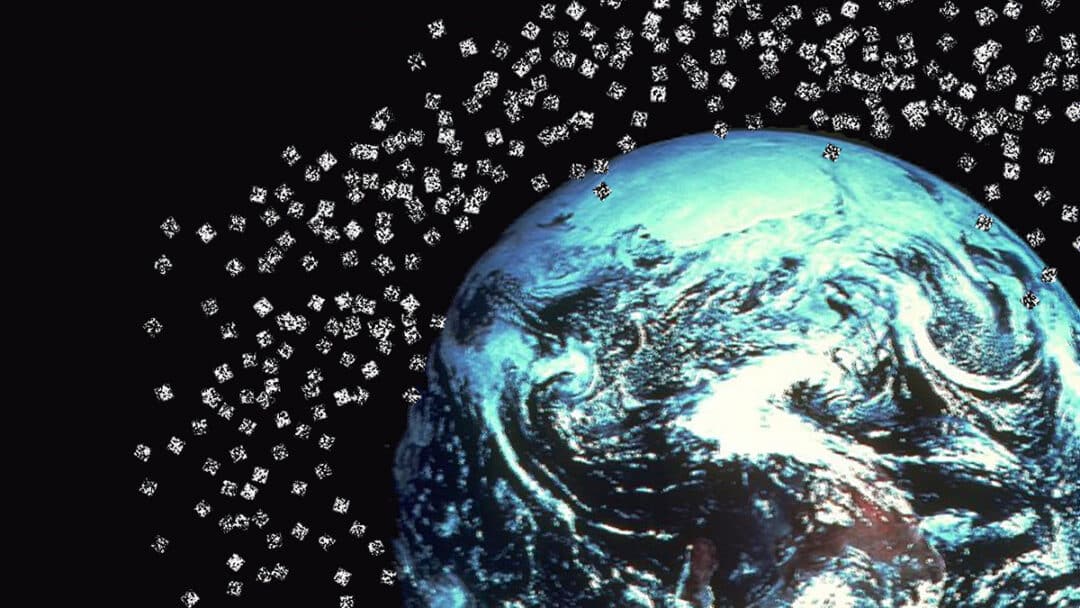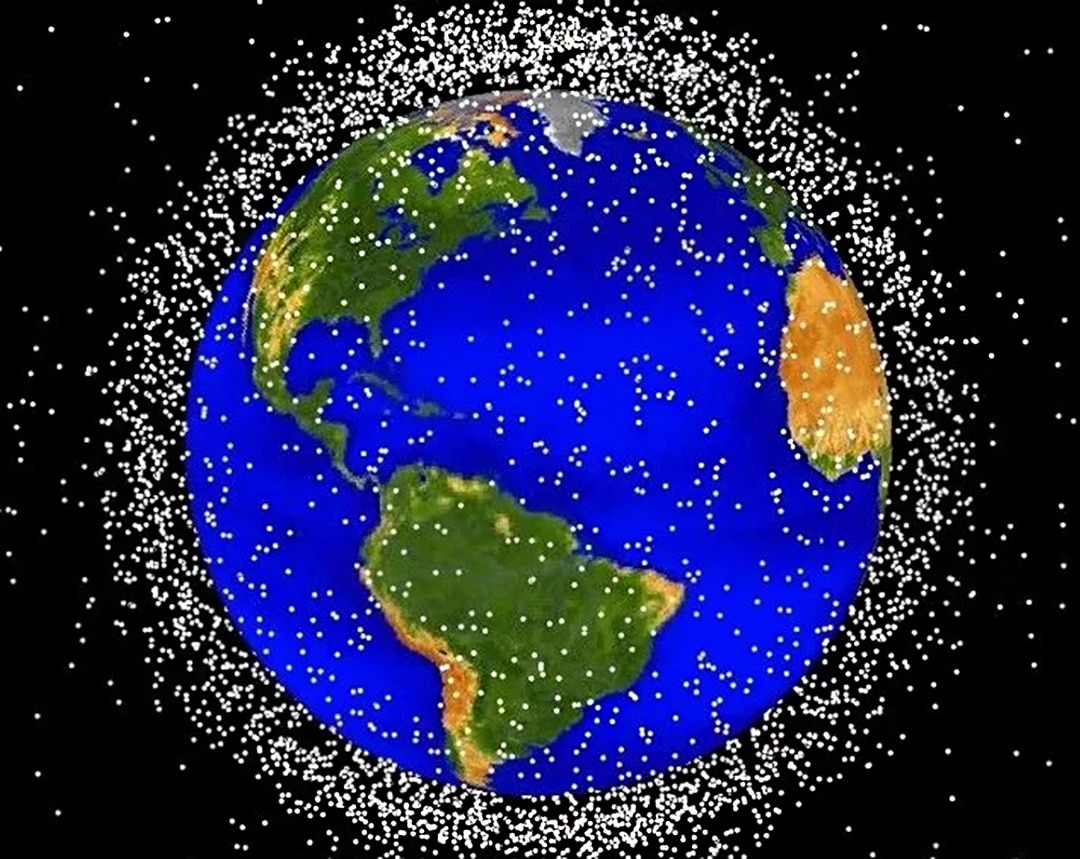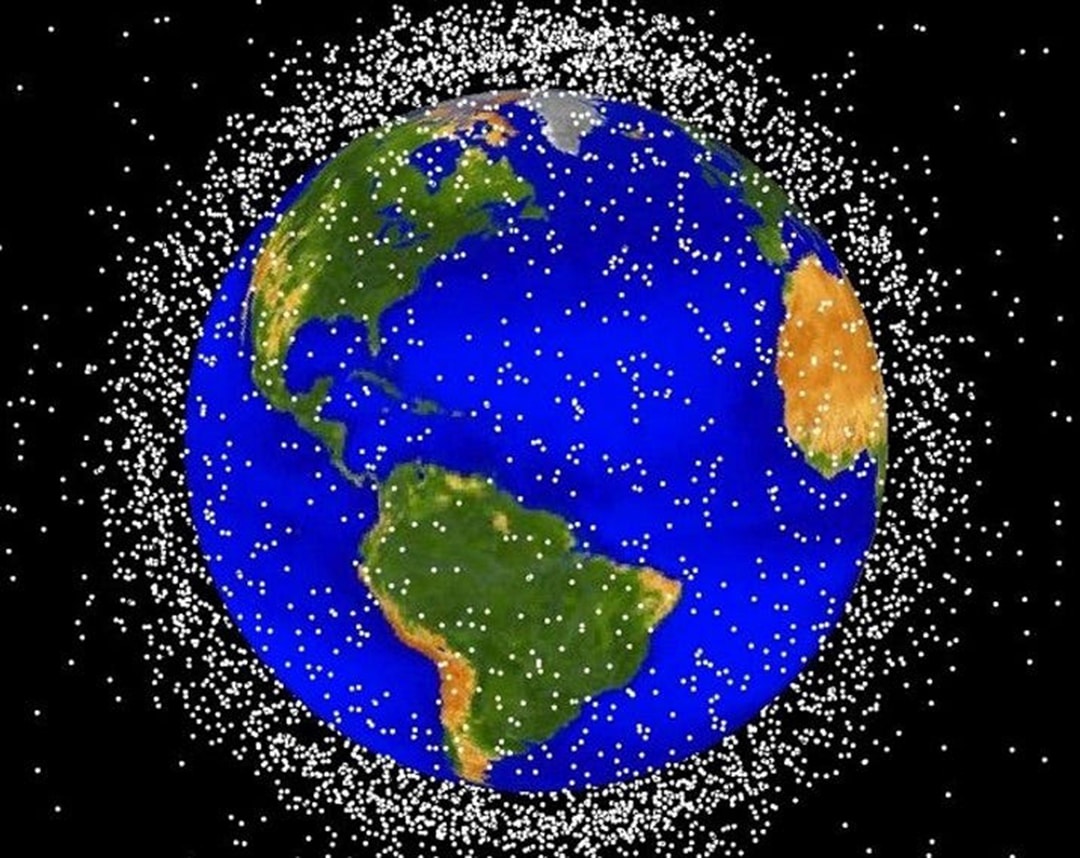

International Dark Sky Association Vs. FCC And SpaceX
by Arthur Firstenberg | May 1, 2024
On December 29, 2022, the International Dark-Sky Association (IDA) sued the U.S. Federal Communications Commission over its decision to approve SpaceX’s application for up to 30,000 more low-orbit satellites, in addition to the 12,000 already approved and in process of filling our skies. This is Case No. 22-1337 before the United States Court of Appeals for the District of Columbia Circuit, and has not yet been decided by the court.
Long-exposure photographs of the sky by astronomers already look like this:
The above photo was taken by an amateur astronomer in a suburban location in Western Australia. The circular tracks are stars. The much brighter straight tracks are all satellites, except for one track which is a meteor.
Below is a 77-minute exposure taken by astronomer Dave Thanatos in Salisbury, England. In this darker location, the circular tracks of the stars are brighter than the straight tracks of the meteors and satellites which, however, fill the entire frame of the photograph. There are only 10 meteors in this picture. All the other straight tracks are satellites. And as Scottish astronomer Andy Lawrence, lead author of “The Case for Space Environmentalism,” said, “Good luck telling the difference!”

American plasma physicist Sierra Solter implored the FCC to “please save our night sky… Please, please, don’t take away my stars. To feel that my place of comfort and calm — a starry sky — is being taken away and given to billionaires is suffocating.”
On December 18, 2023, Ms. Solter published a scientific article detailing her fear for our planet. Each of the 42,000 planned Starlink satellites, she wrote, has a design lifespan of only 5 years, after which it will be de-orbited, burned up in the atmosphere, and replaced. She calculated that this will require 23 satellites per day — each the size of an SUV or truck — to be burned up in the atmosphere forever into the future, leaving an enormous amount of toxic chemicals and metallic dust to accumulate in the air we breathe and in the ionosphere.
This is already happening, she wrote, and should be stopped if we value our lives. “Since the beginning of the space industry, approximately 20,000 tons of material have been demolished during reentry… This is over 100 billion times greater than [the mass of] the Van Allen Belts.” She estimated that if 42,000 Starlink satellites are deployed and regularly demolished — let alone the 1,000,000 satellites planned by other companies and governments — “every second the space industry is adding approximately 2,000 times more conductive material than mass of the Van Allen Belts into the ionosphere.”
“Unlike meteorites, which are small and only contain trace amounts of aluminum, these wrecked spacecraft are huge and consist entirely of aluminum and other exotic, highly conductive materials,” she explained in an April 16, 2024 article in The Guardian.
Much of the metallic dust will settle into the ionosphere where, she says, it could act as a magnetic shield, reducing the magnitude of the Earth’s magnetic field in space. If that happens, the atmosphere itself could eventually be destroyed, because the Earth’s magnetic field — the magnetosphere — is what deflects the solar wind and prevents it from stripping away Earth’s atmosphere, as she told Teresa Pulterova in an interview on Space.com.
Other astronomers involved in the litigation before the FCC and now the Court of Appeals include Meredith Rawls with the Vera C. Rubin Observatory in Chile; Gary Hunt with Action Against Satellite Light Pollution in the UK; Samantha Lawler at the University of Regina in Canada; Graeme Cuffy of Port of Spain, Trinidad and Tobago; Mark Phillips, President of the Astronomical Society of Edinburgh; Roberto Trotta of the Imperial Centre for Inference and Cosmology in London; Carrie Nugent, Associate Professor of Computational Physics and Planetary Science at the Olin College of Engineering in Massachusetts; and Cameron Nelson of Tenzing Startup Consultants in Virginia.
Other issues are also mentioned in the appeal. For example, the burned up aluminum produces aluminum oxide, which destroys ozone and contributes to climate change. So does the water vapor, soot, and nitrogen oxides in rocket exhaust.
Cameron Nelson told the FCC that “Humans, not to mention all other animal and plant life, have not given our consent for SpaceX to send the signals it is proposing into our bodies and irrevocably alter us.”
The BroadBand International Legal Action Network (BBILAN) mentioned “RF/EMF radiation from linked base and earth stations” in comments sent to the FCC. Starlink earth stations, also called Gateways, are far more powerful than the Starlink dishes that people are putting on their homes. The (as of March 2024) 2.6 million Starlink dishes each send one signal up to the moving network of satellites above them. All of this traffic is coordinated in space by thousands of lasers linking the satellites to one another, and on the ground by Gateways, which relay the thousands of signals in a large geographic area to and from the satellites. This is what a Gateway with 5 antennas (“radomes”) looks like:

Some Gateways have up to 40 radomes. Each of those domes weighs 1750 kilograms. Each aims a narrow beam at moving satellites. According to FCC filings by SpaceX, each beam can have an effective radiated power of more than 1,000,000 watts, which it can aim as low as 25 degrees above the horizon. If you are a bird you do not want to fly anywhere near a Starlink Gateway. And if you are a human you do not want to live near one either. When a satellite aims its beam containing thousands of signals at a Gateway, that beam is about 10 miles in diameter by the time it reaches the Earth.
Robin is a subscriber who lives in a remote area of Idaho less than 3 miles from the Starlink Gateway in Colburn. She writes about effects on her family and her animals — effects that disappear when they are at their other home in Montana where they are surrounded by National Forest. The effects on her guinea hens are similar to the effects I wrote about in my last newsletter:
“Our guinea hens make a strange noise while moving in a circle. This only happens in Idaho where we live within 3 miles from a SpaceX ground station. We never see this phenomenon in Montana.
“We also had 2 separate litters of Chihuahua puppies born. Both litters had defects, and both lost a puppy and were smaller in size. The very same thing happened with our cat, small litter, birth defects and the loss of one kitten. There was a fire last year and we were forced back to Idaho and are making EVERY EFFORT to move away from the gateway and our neighbors’ Starlink dishes as quickly as possible. My health is a concern here, but when I go home to Montana I am fully recovered as are my husband and son. We live off grid both places. No electricity, no running water, and it’s a crying shame what is happening to the world with all these manmade devices.”
When in Idaho, Robin suffers from extreme vertigo and nausea, burning migraines, severe pain in her spine and all her joints, tingling in her fingers and toes, memory problems, “extreme gut pain, and at times stabbing pain in gall bladder and liver,” bradycardia, tooth pain and sinus infections, and “severe heart palpitations to the point where I’m gasping for breath while my heart pounds.” Her husband has joint pains, frequent urination during the night, and headaches. Her son has heart arrhythmias, stabbing pains in the gut, and brain fog. She and her husband hear the radiation. “We’re hearing a sort of sped-up Morse code,” she says. “When I go home to Montana I am fully recovered as is my husband and son.”
Robin knows many people in her area who are similarly affected. She adds that “when we first moved here in 2019 we had A LOT of birds. We now have a silent spring, it’s like a dead zone. I’ve heard/seen one Robin and just a handful of birds. We used to put out 11 hummingbird feeders and as of last year we only need one. There were quite a few black bears and a couple of grizzlies but now only one grizzly is around.”
At last count there were 277 Starlink Gateways in operation or under construction in the world: 181 in North America and the Caribbean, 26 in South America, 2 in Africa, 26 in Europe, and 42 in Asia and the Pacific.
The FCC maintains a webpage listing thousands of licenses that it has handed out to hundreds of companies to operate both fixed and mobile satellite earth stations in the United States. Some of these stations are far more powerful than the Starlink Gateways. SES’s earth station at Bristol, Virginia emits up to 1,900,000,000 watts of effective radiated power, and it is allowed to aim it as low as 5 degrees above the horizon. SES’s earth station at Brewster, Washington is allowed to emit almost 1,000,000 watts in the actual direction of the horizon! SES owns O3b mPOWER, which is the satellite system that had its first radomes on board the Diamond Princess cruise ship, the ship that had the famous outbreak of disease blamed on COVID-19 at the beginning of the pandemic.
Arthur Firstenberg, President, Cellular Phone Task Force
Author, The Invisible Rainbow: A History of Electricity and Life
P.O. Box 6216, Santa Fe, NM 87502 USA
arthur@cellphonetaskforce.org
+1 505-471-0129




